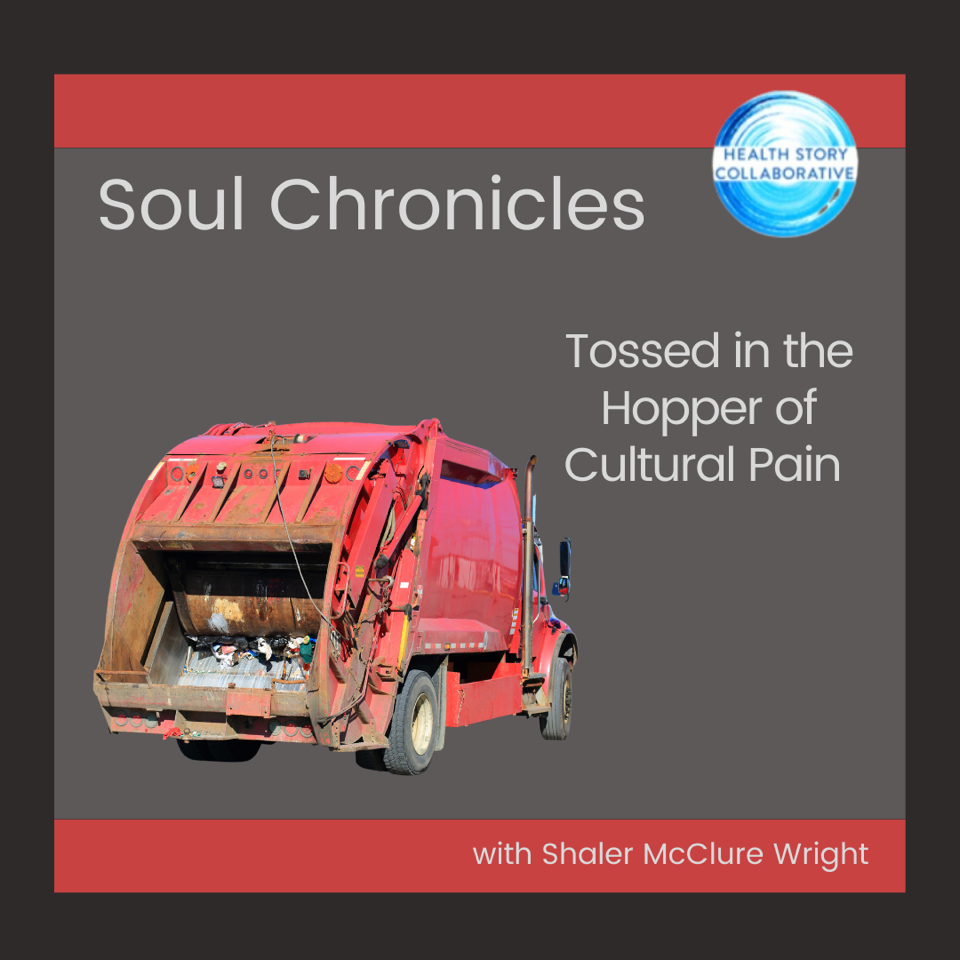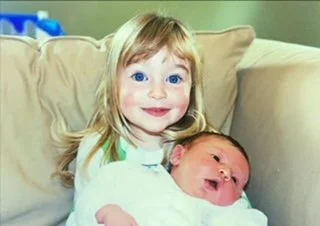Introduction
You’re listening to episode eight of Soul Chronicles, offering a soulful perspective on how to navigate the unique challenges of living with ongoing health conditions. Special thanks to Health Story Collaborative for hosting this monthly audio column. My name is Shaler McClure Wright and I’m a writer/creative living with Chronic Inflammatory Response Syndrome.
Story - The Bittersweet Pain of Letting Go
When life is changing, it can be hard to stay connected with your feelings. And for me, it’s especially difficult when a big change is happening slowly over time. Sometimes it takes a certain moment—an image etched into our imaginations—to trigger awareness and orient us to the deeper truth at the heart of the change. Last week I had such a moment.
Every spring we take our boat out of winter storage and prepare her for the season. And when she’s finally in tip-top shape on launch day, we set off on a maiden voyage across Long Island Sound to circumnavigate Fisher’s Island. Some years are colder or foggier than others, but regardless of the weather it’s always been a joyful tradition, celebrating the start of the summer fun.
Last week my husband and I layered-on the foul weather gear and headed out. I took my usual seat in the bow. It was chilly so we had the Sound to ourselves, seeing only two boats in the distance while crossing. Normally that would fill me with an expansive sense of freedom and peace. But instead, I found myself feeling trapped, tight-chested and choking back tears as we approached the island. Normally the beauty of this island gives me a sense of safety, but this year, as we rounded the western tip, my heart felt like it was being sucked into the sea, never to surface again.
What was this pain about?
Like most people who live with chronic illness, I’ve developed techniques to cope with physical pain. But I wonder—can I use those same techniques to cope with emotional pain?
My only child is graduating from high school this year, marking the beginning of his life as an adult, and the end of his life as a child. It’s a threshold experience—as described in last month’s Soul Chronicle—and a time for joy and celebration. But for me as a parent, with that joy also comes the bittersweet pain of letting go.
Susan Cain, author of Bittersweet; How Sorrow and Longing Make Us Whole, describes this beautifully, “Bittersweetness is a tendency to states of longing, poignancy, and sorrow; an acute awareness of passing time; and a curiously piercing joy at the beauty of the world. It recognizes that light and dark, birth and death—bitter and sweet—are forever paired.”
I believe many of us who have made peace with chronic illness have also embraced the beauty of life’s bittersweet pairings, but we may not know it. I didn’t know until reading Cain’s words. Now I can see that each time I’ve needed to muster courage to deal with a new prognosis, or face the loss of some aspect of life-as-I-knew-it, there’s been an element of bittersweetness leading me forward to acceptance.
Today I want to imagine my way through the bittersweet challenge of letting go of my role as protector of my child, in order to embrace a new role as his liberator. And to do that, I”ll return to my story of annual maiden voyages in our motor boat.
Boating is the glue that holds our family together. We love to escape the daily grind and commune with nature at sea. Preparing a boat for her maiden voyage is a labor of love, and in this way it’s similar to preparing to launch a child into independence. If you’ve maintained a sturdy vessel, then she’ll be able to make her way through the sea because she’s solid and seaworthy; so too, if you’ve raised a resilient child, he should be able to make his way in the world on his own.
My son Jasper was an infant the first time we took him on a maiden voyage. To mark the occasion, we bought a large marine bean bag and placed it between our pedestal seats so he’d be nestled safely between us while we were under way. It takes about an hour to circle Fisher’s Island and we thought that would be long enough for his nap. But no! He just loved the purr of that engine! That year, he was so comfortable and in such deep sleep we had to go around the island twice to avoid waking him. And even though the waves were choppy, he was safe and cozy in our care. The image of him sleeping in that bean bag wearing his red knit cap, clutching a pair of orange velour kitties–one in each hand–is one of my favorite memories.
At age six Jasper was a bundle of curiosity, and finally old enough to appreciate our self-guided Fisher’s Island trivia tour. On that year’s maiden voyage, we revealed to him that Fisher’s Island was chosen as the location for a feature film. On its wild and windy west side, there’s a big white shingled house with a wide wrap-around porch and sea-gazing gazebo, where the movie The World According to Garp, starring Robin Williams, was filmed.
The property includes a small rocky beach, where the wave action can be quite rough. In the movie, Robin Williams calls out to his young son, who is swimming alone for the first time, “Watch out for the undertow!”—a helpful warning from a concerned parent. But that’s not what his son heard. His son heard ‘watch out for the undertoad,’ and from then on he was terrified of a dangerous frog lurking beneath the surface of the water waiting to pull him under and suck him out to sea. Jasper laughed with delight (and perhaps a slight air of superiority) at the idea of such a silly, superstitious child. And his confident smile while staring at that rocky beach that day is another favorite memory.
When compared with memories from those two maiden voyages, the images from this year’s maiden voyage are stark. If I were to hold all three memories side by side—like a triptych—in my imagination, in the first frame I’d see two smitten parents beaming over their helpless, dependent infant; in the next I’d see two proud parents beaming over their clever, confident kid; and finally I’d see two lost parents scanning the coastline for something that’s missing—the continuing presence of their only child.
Ack! How depressing! How might I reframe this triptych?
Let’s take a deeper look at that memorable line from the movie—“Watch out for the undertoad.” The first time I heard it, I simply thought it was funny, but over the years, layers of questions beneath the words have begun to reveal themselves. Such as… How often is a cautionary phrase from a parent misunderstood by a child? And…How often do we parents, in our desire to keep our children safe, cause more harm than good with our advice?
Author John Irving knew this line would have the greatest effect when spoken by a parent to a child. Coming from a parent, it can be taken at least two ways: as an honest expression of concern for safety, and as an ill-fated attempt to control what is beyond his control. Both are very effective for the book’s plot. But the backstory to that line will show us it evolved from a very different circumstance.
Ironically, the line ‘watch out for the undertoad’ came from real life, and the words were first spoken by a child rather than an adult. John Irving’s eldest son Colin said it to his younger brother Brendan, who was just six years old. And from then on, young Brendan was afraid to swim in the ocean.
The layers of meaning within his words were not lost on Colin, and he even understood why his father decided that for the book, the words carried more literary impact when spoken by an adult. Yes, at age twelve Colin understood that if his father switched the character from child to adult it would make the reader question the concept of safety more deeply. In a 2018 interview with Esquire magazine, Irving said his son Colin was also the first one who zeroed in on the main theme of the book. Colin told his father, “If Garp could have been granted one wish, it would have been that he could make the world safe. For children and for grownups.” ‘Watch out for the undertoad’ represents our misguided attempts to do so.
No matter how much we want the world to be safe and stay the same, there’s nothing we can say or do to fully avoid risk or change. That’s as true for those of us with chronic illness as it is for parents. Despite our best wishes to offer valuable advice and guidance, and no matter how much we try to prepare our kids–or each other–for the world, we shouldn’t be surprised if our wisdom and guidance is not enough or lost in translation. And when push comes to shove, we might need to admit that we’re not the great, all-knowing teachers we’d like to be. In fact, we might even need to humble ourselves enough to learn a lesson from our children, just as John Irving received insight from his son Colin.
In the context of high school graduation ‘watch out for the undertoad’ is symbolic of my fear of letting my child go out in the world on his own, but I can also hear it as a clarion call for people with chronic illness. We too need to watch out for dangers that may be lurking in the unknown. Medicine is an evolving science and despite the best care and advice from the people we love and admire, it’s up to us to make decisions to keep ourselves safe.
For me, the emotional journey of letting go of my child has not been as clear-cut as the symbolic gesture that often marks this occasion. The child’s gesture of donning a graduation cap and flipping the tassel from one side to the other seems so matter of fact, when compared with the emotional turmoil I feel as a witnessing parent. How can a transition that makes me so very proud, simultaneously fill me with mind-numbing pain?
Perhaps the pain I feel as a parent is most closely related to fear of my son’s uncharted future. And if John Irving’s son Colin is right, then perhaps the process of setting my child free to pursue his own life is more about fear for his safety, rather than fear of my own loneliness. That would mean my pain is rooted in love rather than selfishness, and that makes it bittersweet.
When pain is looming like an undertoad beneath the surface of a fast-approaching future, I think we can feel confident that the skills we use to make peace with chronic illness will also help us make peace with the undertoad. The tension between facing loss versus denying loss is familiar to us. Our experience of ‘letting go of health as we knew it’ is an example of the bittersweet pain of letting go.
Right now, my imaginary triptych of maiden voyages ends with an image of loneliness, and I’d like to transform that. What might be a better ending? Let’s imagine a new maiden voyage, but with one big difference–This time I’ll visualize Jasper leading the way at the wheel of his very own boat, shouting back over his shoulder to my husband and me as he races through the current off Garp’s beach, “Mom, Dad! Watch out for the undertoad!”
Opening ourselves to learn from our children is one of the unexpected gifts of parenting. Opening ourselves to learn from our fears is one of the unexpected gifts of living a soulful life and embracing the bittersweet. Both can lead us to deeper truths. Thank you for investigating the deeper truth at the heart of high school graduation with me today, and helping me build the courage to watch my son flip his tassel from one side to the other on graduation day without worrying myself sick. Because if I’ve done my job well, he will be just fine without me.
Go here for more episodes of our Soul Chronicles series.
# # #
Shaler McClure Wright is fascinated with the mysteries of creative process, the healing power of creativity, and the creative synthesis of method acting, intuitive learning and depth psychology. A graduate of Wesleyan University and The Actors Studio, Shaler has worked as an actor, writer and educator for more than 40 years, and lives in southeastern Connecticut with her husband and son.
Website: www.shalermcclurewright.com
Instagram: https://www.instagram.com/soulchronicles22/, @soulchronicles22
BioSite: https://bio.site/soulchronicles






























